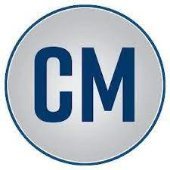-
Welcome to Auto Parts Forum
Whether you are a veteran automotive parts guru or just someone looking for some quick auto parts advice, register today and start a new topic in our forum. Registration is free and you can even sign up with social network platforms such as Facebook, X, and LinkedIn.
AASA Vision: Best Of Times, Worst Of Times In The Aftermarket
-
Similar Topics
-
By Mia
When it’s time to replace your vehicle’s brake pads, you often face the question: should I opt for OEM brake pads or aftermarket ones? Consulting repair shops or friends typically results in recommendations for OEM brake pads. However, for us, changing brake pads isn’t daunting; what’s crucial is understanding the differences between these two types. This understanding allows us to make an informed decision about which type is suitable for our needs.
What Is OEM Brake Pads
OEM stands for Original Equipment Manufacturer. OEM brake pads are manufactured by the same company that produced the original brake pads installed in your vehicle when it was first built.
These brake pads are designed to meet the specifications and standards set by the vehicle manufacturer. They are often sold through authorized dealerships or parts suppliers affiliated with the vehicle brand. OEM brake pads are known for their exact fitment, consistent performance, and compatibility with your vehicle. They typically come with a warranty and are considered to offer a high level of quality and reliability.
And they have stringent requirements. From the production process to the shipment of brake pads, everything is manufactured and inspected according to standards. In practice, the brake pads installed in vehicles are all qualified and trustworthy products.
What Is Aftermarket Brake Pads
Aftermarket brake pads are brake pads manufactured by third-party companies not affiliated with the original vehicle manufacturer. These companies produce brake pads that are compatible with a wide range of vehicle makes and models. Aftermarket brake pads are often designed to meet or exceed the performance and quality standards set by OEM brake pads.
They are available in various materials, including semi-metallic, ceramic, and organic compounds, offering a range of performance characteristics and price points. While aftermarket brake pads may offer cost savings and a wider selection compared to OEM options, the quality and consistency of aftermarket products can vary depending on the manufacturer.
It’s important to research and select reputable aftermarket brands to ensure compatibility and performance.
AFTERMARKET VS. OEM BRAKE PADS: PROS & CONS
Aftermarket brake pads:
Pros:
Cost: Aftermarket brake pads typically come at a lower price point compared to OEM brake pads, making them a favorable choice for customers with budget constraints Variety: Aftermarket brake pads come in a wide range of options, including different materials and performance characteristics, allowing consumers to choose pads that best suit their driving needs. Availability: Aftermarket brake pads are widely available from various retailers and suppliers, making them convenient to purchase. Potential Performance Enhancements: Aftermarket brake pads manufacturers also improve braking performance, such as reduced noise, better heat dissipation, or enhanced stopping power. Cons
Quality Variability: Many aftermarket brake pad manufacturers prioritize low prices, which can result in inconsistent quality. This often leads to issues such as excessive noise, inadequate friction coefficient, and increased wear on brake discs, which are highly unfavorable circumstances. Compatibility Issues: While aftermarket brake pads are designed to be compatible with a variety of vehicles, issues can arise with the dimensions of the brake pads. This can lead to mismatched installations or excessive gaps, resulting in noise and impacting brake performance. Warranty Concerns: While aftermarket brake pad manufacturers often provide warranty periods, many times, these warranties do not accurately reflect the actual lifespan of the brake pads. In other words, the lifespan of the brake pads is significantly reduced, leading to more frequent replacements compared to OEM brake pads, thereby increasing the overall budget for maintenance. OEM brake pads
Pros:
Exact Fitment: OEM brake pads are designed to precisely fit the specifications of your vehicle, ensuring optimal performance and safety. Quality Assurance: OEM brake pads are manufactured by the same company that produced the original parts for your vehicle, guaranteeing consistent quality and reliability. Warranty Coverage: OEM brake pads typically come with a warranty from the vehicle manufacturer, providing peace of mind and protection against defects or failures. Manufacturer Support: Purchasing OEM brake pads from authorized dealerships or parts suppliers often comes with access to manufacturer support and assistance. How Should We Choose
Actually, for us ordinary consumers, when choosing brake pads, we often compare based on quality and price. But for some brake pad manufacturers, isn’t there one that produces aftermarket brake pads with quality comparable to OEM brake pads?
The answer is yes, and KETULLA is one such factory. Established in 2000, we’ve been in the business for 24 years, continuously researching, developing, and optimizing brake pads.
We have obtained authorization from 6 automotive manufacturers to produce brake pads, earning us the title of OEM brake pads manufacturer.
Whether it’s aftermarket or OEM brake pads, we uphold the same standard of quality as OEM brake pads. This is evident in several aspects:
Dimension: We adhere to strict specifications for brake pad dimensions, maintaining a tolerance range of 0.1 to 0.2mm, which fully complies with OEM brake pad standards. Materials Selection: No asbestos(Actually, we stopped using it 10 years ago) We use high-quality materials(ceramic carbon fiber, graphite, metal fiber)in our brake pads, ensuring durability and performance comparable to OEM standards. Copper-free: We strictly adhere to international standards by manufacturing brake pads that are copper-free, thus avoiding environmental pollution Manufacturing Process: Our production process follows strict guidelines and quality control measures to maintain consistency and reliability in every brake pad we produce. Testing and Certification: Each brake pad undergoes rigorous testing to ensure it meets or exceeds industry standards and safety requirements. Quality Guarantee: We stand behind the performance of our brake pads, offering warranties and support to ensure customer satisfaction and safety on the road. link hidden, please login to view low metallic brake pads link hidden, please login to view semi metallic brake pads link hidden, please login to view ceramic brake pads GF truck brake pads
Hope you can get more knowledge about brake pads from this website:
link hidden, please login to view -
By Counterman
The automotive aftermarket often celebrates its long and historic legacy—manufacturers that engineer solutions, distribution channels that crisscross the country, parts stores and repair shops that keep America moving. Today, the aftermarket is paving the foundation of a new legacy—dreaming up innovation in new and existing powertrains, leveraging digitally driven solutions and forging stronger relationships. This year’s Road to AAPEX traverses the crossroads where history meets ingenuity to drive the industry down the road toward its future legacy.
Babcox Media’s Joe Keene, an ASE-certified technician, navigates the automotive aftermarket landscape, starting at the Crawford Museum in Cleveland, Ohio. A location rich in automotive history, the Crawford Museum displays a parallel path between early automotive designs and modern vehicles that shows off the continuous advancements that have shaped the industry.
Meanwhile, David Sickels, Babcox Media editor, will delve into the aftermarket and the significant contributions of independent companies within the supply chain. He’ll travel the country to chart the history of the aftermarket, the key players, and the processes involved in manufacturing automotive parts. He will interview key figures in the industry and examine the processes that bring aftermarket parts from conception to market, providing valuable insights into the operational aspects and historical development of the aftermarket sector.
Then there’s Babcox Media’s Scott Shriber, automotive aftermarket guru, who will focus on the logistics and distribution chains that deliver parts to local technicians and repair shops. He’ll explore the history of parts distribution, tracing its growth and evolution into the complex system it is today while providing a detailed look at how distribution networks have adapted to meet increasing demand and technological advancements, ensuring parts are delivered efficiently and reliably.
Of course, it all ends where the rubber meets the road—the hard-working automotive repairs shops that put the parts and solutions to work to get customer vehicles back on the road. Joe Keene will take us on a tour of the automotive aftermarket front line to talk with shop owners and technicians about how they’re innovating within their own businesses to keep America moving.
Watch the video for a deeper understanding of the industry’s dynamics and the factors that drive its continuous evolution. Be sure to stay tuned for more episodes of Road to AAPEX.
The post
link hidden, please login to view appeared first on link hidden, please login to view.
link hidden, please login to view -
By Dorman Products
Swapping a knuckle or replacing a bearing? Loaded knuckles are the DIYers best friend
-
By Counterman
The importance of collaboration in the automotive aftermarket can’t be overstated. Distributors, manufacturers, training institutions, associations and service providers all help automotive professionals stay ahead in a market that is constantly evolving with new technologies, trends, and customer demands.
There’s no better place that fosters vital industry connections than
link hidden, please login to view, held annually in Las Vegas. AAPEX serves as a nexus where industry professionals come together to forge new relationships, strengthen existing ones, and stay abreast of the latest industry developments. Training is a cornerstone of AAPEX’s offerings, reflecting its commitment to elevating the industry standards. By participating in these sessions, businesses can ensure that their teams are knowledgeable about the latest technologies, products, and best practices.
This not only helps in improving service quality but also fosters a culture of continuous learning and improvement within organizations. Beyond training, AAPEX provides countless networking opportunities. These events enable professionals to meet new people and companies, opening doors to potential collaborations and partnerships. By leveraging these opportunities, industry professionals can ensure they remain at the forefront of industry developments, driving growth and innovation in the process.
This year’s AAPEX will be in Las Vegas November 5-7 and promises to be a vital gathering for those looking to strengthen their business connections and stay ahead in the rapidly evolving aftermarket landscape.
The post
link hidden, please login to view appeared first on link hidden, please login to view.
link hidden, please login to view -
By Counterman
The group
link hidden, please login to view estimates the global piston ring aftermarket will reach a value of $2.81 billion in 2024 and increase 4.8% over the next 10 years. According to FactMR, the market share of gasoline and hybrid cars is still huge, which will keep the demand growth for piston rings in the aftermarket steady over the coming years.
Key Takeaways from the FactMR Study:
Aftermarket sales of piston rings are expected to reach US$ 2.81 billion in 2024. The market is forecasted to touch US$ 4.5 billion by the end of 2034. Aftermarket sales of piston rings in the United States are set to reach US$ 581.1 million in 2024. China occupies a 60% share of the East Asia market in 2024. Aftermarket piston ring sales in Japan are expected to touch US$ 258.4 million in 2024. The East Asia market is projected to expand at a CAGR of 5.9% over the next 10 years. The post
link hidden, please login to view appeared first on link hidden, please login to view.
link hidden, please login to view
-



Recommended Posts
Join the conversation
You can post now and register later. If you have an account, sign in now to post with your account.
Note: Your post will require moderator approval before it will be visible.